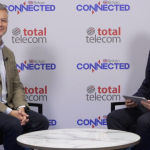Insight
Since that first summer in 2019, 5G has become the fastest-growing mobile communications technology in the world. According to David Wang, Executive Director of the Board and Chairman of the ICT Infrastructure Managing Board at Huawei, speaking on stage at Day 0, there are currently around 320 5G network services worldwide, covering around 1.8 billion users. This is three times the growth rate of 4g in the same time period.
Alongside mobile subscriptions, 5G has proved revolutionary for fixed wireless access (FWA), with over half the world’s 5G network operators now offering commercial 5G FWA services. Now, this year, 5G is set to evolve yet again, with 3GPP’s Release-18 – featuring the first standardised version of 5G Advanced – being finalised on the 18 June.
5G Advanced, said Wang, represents a major opportunity for operators worldwide, promising to deliver considerable opportunities for monetization and revenue generation.
5G Advanced: New business opportunities in toC (consumer), toH (home) and toB (business)
To Consumer:
One challenge in the consumer sector is that there has been a sharp slowdown in traffic growth.
- The user penetration rate of 5G packages reached 80% by the end of 2023. In the future, traffic growth due to 5G user migration will not be as great.
- The OTT bit rate is continually reduced. Wang gives the example of OTT whose bit rate in 2023 was reduced by 27% on 2022.
- The average time mobile users spend on their devices is thought to have peaked, and now flatlined at around 160 hours per month.
Firstly, there will be a shift from user-generated content (UGC) to AI-generated content (AIGC), meaning the amount of content produced will rapidly grow. For context, AI has produced 15 billion images in 18 months, more than the total number of photos taken by humans since photography began. That’s just since the start of 2023!
Secondly, AI will enable device interaction in multiple forms (such as voice, touch, and video), which is expected to extend consumer interaction time, up from the current average of 5.3 hours per day that the average person spends on their phone.
Finally, there will be an increase in AI mobile phones and AI wearable devices, which are expected to become ubiquitous. 5G Advanced will be needed to meet the requirements of these higher-rate and larger-capacity devices. The proportion of these device shipments is expected to increase from 11% in 2024 to 90% in 2030.
To Home:
5G Advanced will allow FWA customers to have a fibre-like experience, increasing making 5G a mainstream choice when it comes to home broadband technologies.
In the era of 4G, the average data rate of FWA was around 20 Mbps – enough to be a supplementary choice for the home broadband market.
“Three years after the commercial use of 4G networks, just 30% of 4G operators released FWA services Now, three years into the 5G era, around 50% of 5G operators have put the FWA service into commercial use,” said Wang. “In the 5G Advanced era, we predict that 70% of 5G operators will commercialise FWA services by 2026. FWA is changing from a supplementary choice of home broadband to a mainstream choice.”
To Business:
One example is in the IoT (Internet of Things) market. 5G IoT deployment has faced two large challenges: that the terminals are expensive and difficult to expand, and the solution relies on an active power supply and is not applicable to high-density deployment scenarios.
5G Advanced will help solve both of these problems through its RedCap and Passive-IoT technologies:
– RedCap: the device price of RedCap is more than 60% lower than that of 5G NR, which can promote the rapid increase of connections in high-value scenarios such as video connections.
– Passive-IoT: Passive-IoT provides 10 times more coverage than the RFID technology. The cost of labeling can therefore remain within one yuan. It also provides location services. In the future, the number of potential connections will reach 100 billion.
2024: The year of 5G Advanced?
Concluding his Day 0 speech, Wang emphasised his optimism that 2024 will soon be viewed as the start of a new era for 5G. “The standards, technologies, ecosystem, and business elements are all ready,” he said.
“Huawei looks forward to working with the industry to build a healthy 5G-A ecosystem, promote 5G-A standard upgrade, and share the dividends of 5G-A development,” concluded Wang.
















